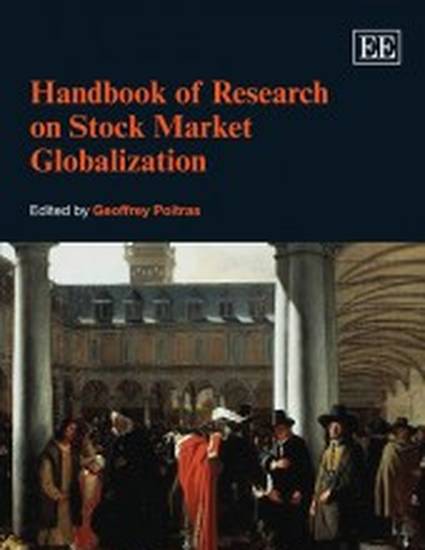
Contribution to Book
The Impact of Electronic Communication Networks on Exchange Trading Floors and Derivatives Regulation
Handbook of Research on Stock Market Globalization
(2012)
Abstract
The colorful 'open outcry' trading in the 'pits' of the Chicago futures exchanges and the bell-ringing opening of trading on the floor of the New York Stock Exchange (NYSE) has long dominated the public perception of how those markets operate. However, exchange trading floors are fast fading into history because the trading of stocks and derivative instruments are moving to electronic communications networks (ECNs) that simply match trades by computers through algorithms at incredibly high speeds and volumes. Competition from ECNs has already forced the NYSE and the Chicago futures and options exchanges to demutualize, consolidate and reduce the role of their trading floors, while expanding their own electronic execution facilities.
This chapter will describe the development of electronic trading through ECNs and how the futures, equity and equity options exchanges responded to that competition. As will be shown, the traditional exchanges paralleled each other in resisting electronic trading in order to preserve their traditional open outcry trading floors. Gradually, after much pressure from market users, those exchanges began to adopt computer-assisted
executions as a way of speeding up the trading process, while still preserving their trading floors. That still left the exchanges exposed to competition from the newly arrived and fully electronic ECNs, which quickly grabbed market share from the traditional markets. Finally, the exchanges accepted the inevitable and became fully committed to electronic trading.
This chapter will also address the regulatory concerns raised by electronic traders. The ECNs have provided new trading opportunities for algorithmic traders, but their trading was soon causing regulatory concerns. High-frequency electronic traders are now dominating market volume in both the securities and derivatives markets, raising concerns on how their trading is affecting long-term investors. Some electronic trading practices such
as 'naked access' and 'quote stuffing' and trading in 'dark pools' are also under regulatory scrutiny. High-frequency electronic traders were suspected as contributors to the 'flash crash' that resulted in a 1000-point drop in the Dow Jones Industrial Average in just a few minutes on 6 May 2010.
Keywords
- electronic communication,
- NYSE,
- trading floors.,
- electronic traders
Disciplines
Publication Date
2012
Editor
Geoffrey Poitras
Publisher
Edward Elgar Publishing
ISBN
9781847207562
Publisher Statement
The stock market globalization process has produced historic changes in the structure of stock markets, the effects of which are evident throughout the world. Despite these transformations, there are relatively few sources examining the connections between the globalization process currently under way and previous periods of stock market globalization. This seminal volume fills that gap.
The chapters in the first section examine previous globalization periods through the lens of the corporate economy, valuing equities and managed funds. Further chapters address current issues such as the social closure of the exchange, demutualization and mergers and acquisitions as well as cross-listing and liquidity. The final chapters consider the regulatory challenges posed by stock market globalization. These include the pressures on regulators from rent-seeking stock market participants, the demise of exchange trading floors and Latin America’s stock market.
Timely, multi-disciplinary and practical, this informative Handbook will be an essential reference for students and scholars of economics, finance and accounting, finance professionals and security market regulators.
Citation Information
Jerry W. Markham and Daniel J. Harty, The Impact of Electronic Communication Networks on Exchange Trading Floors and Derivatives Regulation, in Handbook of Research on Stock Market Globalization, (Geoffrey Poitras ed., Edward Elgar Publishing, 2012).
